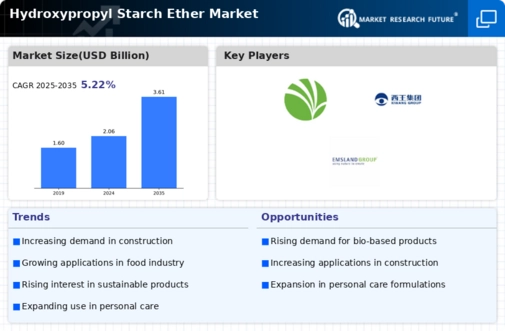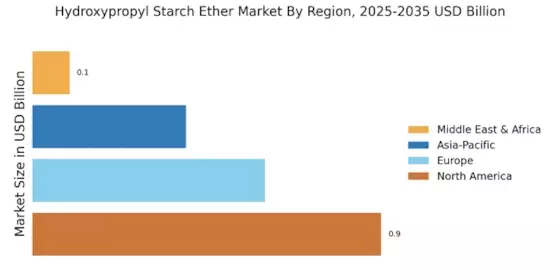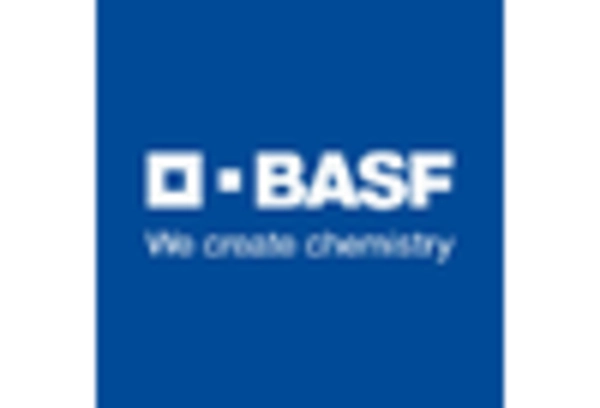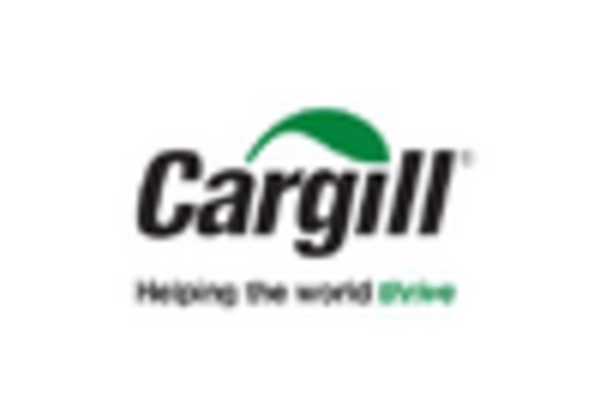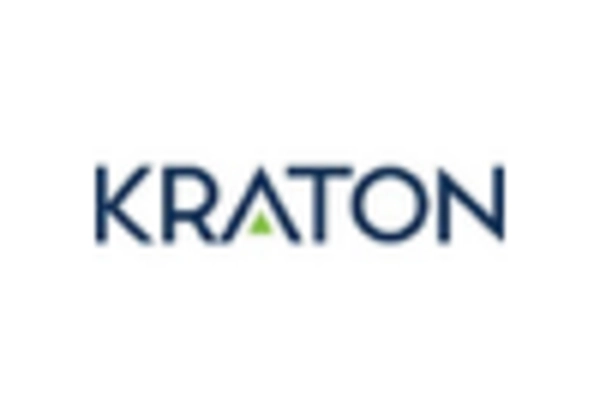Rising Demand in Construction Sector
The Hydroxypropyl Starch Ether Market is experiencing a notable surge in demand, particularly from the construction sector. This increase is attributed to the growing need for high-performance building materials that enhance durability and workability. Hydroxypropyl starch ethers are utilized in various applications, including cement-based products and plaster formulations, where they improve adhesion and water retention. According to recent estimates, the construction industry is projected to grow at a compound annual growth rate of approximately 5.5% over the next few years, thereby driving the demand for hydroxypropyl starch ethers. As construction projects expand, the Hydroxypropyl Starch Ether Market is likely to benefit from this upward trend, positioning itself as a key player in the supply chain of construction materials.
Expansion of Food Industry Applications
The Hydroxypropyl Starch Ether Market is benefiting from the expansion of applications within the food industry. These ethers are utilized as food additives, providing functionalities such as thickening, stabilizing, and gelling. The increasing consumer demand for convenience foods and ready-to-eat meals has prompted food manufacturers to enhance product texture and shelf life. Recent market analyses indicate that the food additives market is projected to grow at a rate of approximately 5% per year, which is likely to positively impact the Hydroxypropyl Starch Ether Market. As food manufacturers continue to innovate and develop new products, the demand for hydroxypropyl starch ethers is expected to rise, further solidifying their role in food technology.
Growing Interest in Eco-Friendly Products
The Hydroxypropyl Starch Ether Market is experiencing a shift towards eco-friendly products, driven by increasing consumer awareness regarding environmental sustainability. Manufacturers are increasingly focusing on developing biodegradable and non-toxic alternatives to synthetic additives. Hydroxypropyl starch ethers, being derived from natural sources, align well with this trend, offering a sustainable option for various applications. The market for eco-friendly products is anticipated to grow at a compound annual growth rate of around 6% in the coming years. This growth is likely to create new opportunities for the Hydroxypropyl Starch Ether Market, as companies strive to meet the rising demand for environmentally responsible solutions across multiple sectors.
Increased Adoption in Personal Care Products
The Hydroxypropyl Starch Ether Market is witnessing increased adoption in the personal care sector, where these ethers serve as effective thickeners and stabilizers in various formulations. The growing consumer preference for natural and organic products has led manufacturers to seek alternatives that align with these trends. Hydroxypropyl starch ethers are derived from renewable resources, making them an attractive option for formulators aiming to enhance product performance while adhering to sustainability goals. The personal care market is expected to expand significantly, with a projected growth rate of around 4.2% annually. This growth is likely to further stimulate the Hydroxypropyl Starch Ether Market, as companies increasingly incorporate these ethers into their product lines to meet consumer demands.
Technological Innovations in Production Processes
The Hydroxypropyl Starch Ether Market is poised for growth due to ongoing technological innovations in production processes. Advances in manufacturing techniques are enhancing the efficiency and quality of hydroxypropyl starch ethers, making them more accessible to various industries. Innovations such as improved extraction methods and the development of new formulations are likely to reduce production costs and increase product availability. As industries seek to optimize their supply chains and improve product performance, the Hydroxypropyl Starch Ether Market stands to benefit from these advancements. The potential for increased production capacity and reduced environmental impact may further drive the adoption of hydroxypropyl starch ethers across diverse applications.


